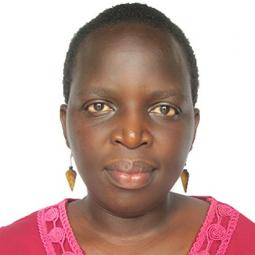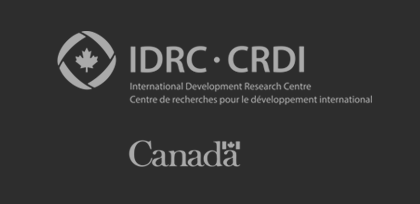OWSD Nigeria National Chapter Presents: "The Significance of Nutritional Etiquette to Women's Health" by Ododobari Jike-Wai
August 05, 2020
In this twelfth edition of the OWSD Nigeria National Chapter University of Port Harcourt Branch series of scientific communications, Ododobari Jike-Wai addresses nutrition.
Introduction
Nutrition is the study of food and how the body uses it. It can also be defined as the science that provides explanations of how the body uses food nutrients as nourishment for development, optimal functioning, and performance.
Etiquette is all about behaving in a manner that shows you are responsible.
So, Nutritional etiquette is engaging in responsible eating behaviours that guarantee nourishment, proper development, optimal body functioning, and performance throughout our lifetime. Simply put; it is engaging in eating patterns that ensure living in sound health.
Why is nutritional etiquette significant to women’s health?
Nutritional status is the physiological state of an individual which is decided by their nutrient intake and utilization of the nutrient by the body. Malnutrition occurs when there is poor utilization of food nutrients by the body. Malnutrition is an indicator of poor nutritional status, which is a reflection of poor food behaviour.
So what are some of this etiquette that is significant to women’s health? These include:
1. Eating right. This involves eating adequate diets at all mealtimes. Ensure that all key nutrients (carbohydrate, protein, fats/oil, vitamins, and minerals) are represented on your plate in the right amounts every time you are eating. So choose foods that suit your age, health status, and activity level, and consume them in the right quantities at mealtimes. There are several facets to eating right. These include:
a. Portion sizes.This is the quantity of food you choose to eat. Portion size regulates macronutrient fractions for a well-proportioned meal. Individual portion sizes can be determined easily using either of the listed methods:
(i) Use your plate as a portion guide by dividing it into four equal parts, with half the part for vegetables and fruits, a quarter for carbohydrates foods, and the last quarter for protein foods, while fat and oils are used sparingly as dressing.
(ii) Use your hand as a portion guide. Here your palm size is for protein food, your cupped hand is for carbohydrate foods, fist size is for vegetable and fruits while your thumb size for fat and oil.
(iii) Use commercially sold portion control plates.
b. Prioritize seasonal foods. This is because nutrient density is highest when the food is in season than when it is out of season or on the shelf.
c. Use nutrient conserving food preparation methods.This helps retain most of the nutrients in the food, as no single food item contains one nutrient alone.
d. Engage in healthy snacking, such as fruits and vegetables.
e. Have a variety of food from the different food groups in a meal. This ensures that you get a healthy supply of varied and required nutrients in your diet. Monotony kills appetite.
f. Limit patronage of food vendors. This is because the kind of ingredients used in meal preparation cannot be ascertained correctly.
g. Read labels on packaged foods. This will help the consumer make an informed choice during purchase. Labels give you information on the content of the food, manufacturing and expiration date, ingredients used and some go further to tell you serving size.
h. Be consistent in your eating routine and avoid eating after 7 pm. The timing of your meals can affect your body's weight regulation, metabolic regulation, heart health, and sleep cycle.
2. Periodic self-assessment of nutritional status using anthropometry.
Anthropometry is the measurement of body dimensions. It is an easy method of assessing nutritional status but cannot be used alone to decide the nutritional state of a person.
a. Waist circumference. This measurement is used to assess abdominal fat deposit, which is an indication of one's predisposition to obesity and metabolic disorders. It is useful in individuals that are 5feet or taller and have a body mass index of less than 35.
Waist measurement is taken to the nearest centimeter using a non-stretch tape at the smallest area below the rib cage and at the level of the umbilicus around the waist with the subject standing erect. Measurements greater than 102cm in men and 88cm in women (of average height) may be a pointer to abdominal adiposity (excess abdominal fat), a risk factor for obesity.
b. Body mass index (BMI) - Is a measure of body mass based on weight and height measurements. It is used to identify underweight, overweight, or obese individuals. It highly correlates adiposity but varies with sex, age, and race. This is because BMI is a reflection of muscle mass, bone mass, and fat deposits. Body mass indexes outside of the normal range may be a potential health risk.
BMI is calculated using weight measurement (kg) divided by height measurement (m2) and measurement interpreted thus:
<18.5: underweight
18.5 – 24.9: normal
25.0 – 29.9: overweight
> Or equal to 30: obese.
3. Maintain good hydration status at all times - Water is essential for normal body functions. The human body is made up of approximately 75% water. Maintaining good hydration is essential to prevent dehydration which has negative health consequences. Some of these include; constipation, fatigue, joint and muscle pains, and headaches. Water cannot be compressed and forms the lubricant found in the knee and other joints, it is the basis for amniotic fluid which serves as a shock absorber for the growing fetus.
The amount of water an individual should consume per day to remain hydrated can be determined by dividing the person's weight (measured in a pound) by 2 and dividing the value obtained by 33.814 to get its equivalent in litres. The simplest way to check your hydration status is by looking at your urine colour. The lighter and clearer the urine colour the better your hydration status.
Regular exercise though not a nutritional etiquette compliments both the health and nutritional status of an individual. Experts say that regular exercise helps strengthen the digestive tract and keep the gut healthy. Research suggests that regular exercise benefits the digestive system by enhancing the microbiota found in the GI tract, and reducing the risk of colon cancer. Exercising increases blood flow towards the muscles and digestive tract, as well as prevent constipation. Walking is the easiest form of exercise. Regular exercise keeps the woman’s body fit at all times.
Conclusion
Adherence to nutritional etiquette is to take charge of your nutrition in other to be in good health and nutritional standing, which will boost women’s reproductive capacity and prevent malnutrition and its outcomes in their offspring. Good nutritional etiquette guarantees a healthier and productive tomorrow.
Reference
Ellis, E., (2018). Serving Size vs Portion Size; Is There a Difference. Academy of nutrition and dietetics. Retrieved from https://www.eatright.org/food/nutrition/nutrition-facts-and-food-labels/serving-size-vs-portion-size-is-there-a-difference
Ross, R., Neeland, I.J., Yamashita, S. et al. (2020).Waist circumference as a vital sign in clinical practice: a Consensus Statement from the IAS and ICCR Working Group on Visceral Obesity. Nat Rev Endocrinol 16, 177–189, https://doi.org/10.1038/s41574-019-0310-7
Monda, V., Villano, I., Messina, A., Valenzano, A., Esposito, T., Moscatelli, F., Viggiano, F., Cibelli, G., Chieffi, S., Monda, M., & Messina, G. (2017). Exercise Modifies the Gut Microbiota with Positive Health Effects. Oxidative Medicine and Cellular Longevity, http://downloads.hindawi.com/journals/omcl/2017/3831972.pdf
Brown, M.J., (2018). 9 Tips to Measure and Control Portion Sizes https://www.healthline.com/nutrition/portion-control.
Mitchell, M.K., (2015). Nutrition across the life span (2nd ed), New Delhi, Med Tech.
Contact Details:
Ododobari Jike-Wai
Department of Agricultural Economics and Extension,
Faculty of Agriculture,
University of Port Harcourt,
Rivers State,
Nigeria.
Email : ododbari.jikewai@uniport.edu.ng
LinkedIn: Jike-Wai Ododobari











































